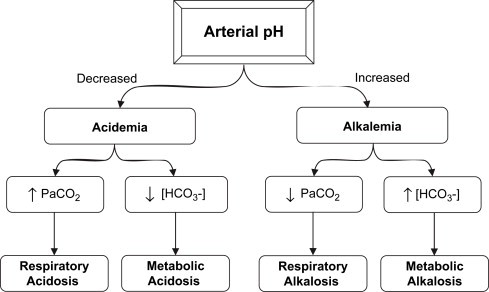A nurse is caring for a patient who is 1 day postoperative following a cholecystectomy. The nurse suspects the patient's wound is infected because the drainage from the dressing is yellow and thick. Which of the following findings should the nurse report as the type of drainage found?
Serosanguineous
Serous
Purulent
Sanguineous
The Correct Answer is C
Choice A reason: Serosanguineous drainage is a mixture of blood and clear fluid, not typically yellow and thick.
Choice B reason: Serous drainage is clear and watery, not yellow and thick.
Choice C reason: Purulent drainage is typically yellow and thick, indicating the presence of pus, which can be a sign of infection.
Choice D reason: Sanguineous drainage is fresh bleeding, bright red in color, not yellow and thick.
Nursing Test Bank
Naxlex Comprehensive Predictor Exams
Related Questions
Correct Answer is A
Explanation
Choice A reason: Metabolic acidosis is characterized by a low pH and a normal or low HCO3. In this case, the pH is 7.25, which is below the normal range of 7.35-7.45, and the HCO3 is 22, which is at the lower end of the normal range of 22-26 mEq/L, indicating metabolic acidosis.
Choice B reason: Respiratory acidosis is characterized by a high CO2 level. However, in this scenario, the CO2 is 40, which is within the normal range of 35-45 mmHg, ruling out respiratory acidosis.
Choice C reason: Metabolic alkalosis would present with a high pH and a high HCO3 level. Since the pH is low, metabolic alkalosis is not the correct answer.
Choice D reason: Respiratory alkalosis is characterized by a low CO2 level and a high pH. Given that the CO2 is normal and the pH is low, respiratory alkalosis is not the condition indicated by these ABG results.
 |
Correct Answer is B
Explanation
Choice A reason: Forming a routine at different times of the day does not specifically address constipation and can be confusing for the patient.
Choice B reason: Increasing daily fluid intake can help alleviate constipation by softening the stool and promoting bowel movements.
Choice C reason: Increasing daily activity can help with constipation, but it is not as immediate or effective as increasing fluid intake.
Choice D reason: Consuming a low-fiber diet is not recommended for constipation; in fact, a high-fiber diet is beneficial.
Whether you are a student looking to ace your exams or a practicing nurse seeking to enhance your expertise , our nursing education contents will empower you with the confidence and competence to make a difference in the lives of patients and become a respected leader in the healthcare field.
Visit Naxlex, invest in your future and unlock endless possibilities with our unparalleled nursing education contents today
Report Wrong Answer on the Current Question
Do you disagree with the answer? If yes, what is your expected answer? Explain.
Kindly be descriptive with the issue you are facing.
